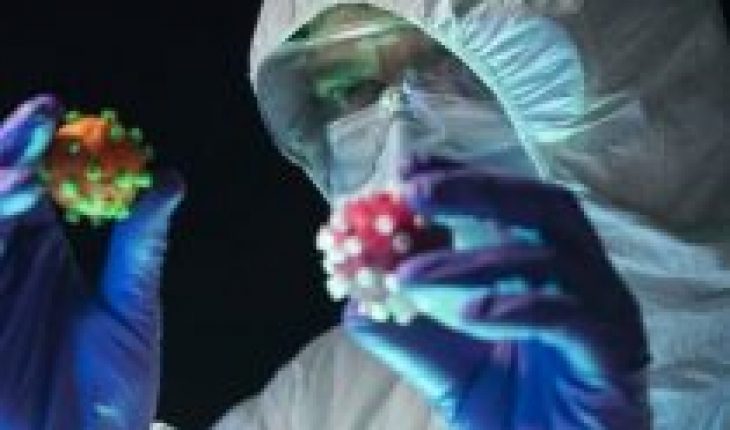
Brazil is living one of the worst moments in the pandemic, with a growing number of contagions and deaths from covid-19.
The increase in cases in recent days has been attributed in part to the spread of a highly contagious variant of the virus, called P.1, which is believed to have originated in the Amazonian city of Manaus.
Experts warn that what happens in Brazil is just one example of the importance of tracking the emergence of SARS-CoV-2 virus variants in Latin America.
This tracking is known as genomic surveillance, and, according to the experts consulted by BBC Mundo, it is a task in which Latin America lags behind. Specialists agree that, although progress has been made, there is a need in the region to strengthen genomic surveillance and warn of risk not to do it on a large scale.
“Latin America needs strong genomic surveillance. In most countries it is still minimal,” epidemiologist Zulma Cucunubá, a specialist in infectious diseases and public health at Imperial College London in London in London, wrote on Twitter in early March.
“We don’t know what’s going on with SARS-CoV-2 variants in the region.”
What is genomic surveillance and what is its status in Latin America?
The genetics of the virus
Each SARS-CoV-2 virus has a genetic code that is expressed in a sequence of 30, 000 letters.
This set of letters is known as the genome of the virus, and is the one that gives you the instructions to function and transmit.
In addition, those letters function as a “historical archive of the evolution of the virus“, as Fernando González Candelas, professor of genetics at the University of Valencia in Spain, explains in an article published in The Conversation.
Each time the virus is transmitted, it can accumulate changes in your genetic material. IMAGE SOURCE: GETTY
Every time the virus spreads to a new person there is a possibility that Mute, a characteristic of viruses.
Thus, scientists may know that a virus mutad by noticing that some of the letters in its genome changed.
Mutations occur all the time, but when a group of viruses share the same set of mutations they form what is known as a variant.
SarS-CoV-2 variants have been identified in various parts of the world during the pandemic.
Some of them are what are technically known as “Variants of concern”, because they have the potential to be more contagious, cause a more serious disease or reduce the effect of vaccines.
So far, at least three variants of concern have been identified:
The B.1.1.7, first identified in the United Kingdom
B.1.351, first identified in South Africa
P.1, first identified in Brazil
“The virus is not a static unit but is changing,” Julian Villabona, a molecular epidemiologist at the London School of Hygiene and Tropical Medicine’s Centre for Mathematical Modelling of Infectious Diseases, tells BBC Mundo Julián Villabona.
“If given the opportunity, you will change ways that allow you to infect more people or in some cases cause a more serious illness.”
Genomic surveillance is used to detect variants that can spread around the world. IMAGE SOURCE: GETTY
Track variants
These variants have been identified by scientists sharing thousands of virus genomes in a large global database.
That database is called GISAID (Global Initiative on Sharing All Influenza Data).
Its name is because it was originally created to monitor the genome of the virus influenza.
What researchers do in GISAID is deposit the 30,000 letters of the virus that infected every person they manage to register.
In terms of the pandemic, experts have learned that SARS-CoV-2 accumulates one to two mutations per month, as Villabona explains.
Thus, genomic surveillance should review the 30,000 letters of the virus that infects each person and observe what changes have been made regarding other people’s viruses.
“Genomics is the only technology that allows us to identify new variants that concern us,” Catalina López Correa, a genetics physician and executive director of the Canadian Covid-19 Genomics Network (CanCOGeN) tells BBC Mundo.
“If we do not understand what variants we have and how they are being transmitted, we risk that at some point vaccines are not effective“.
Virus mutations can make it more contagious or lessen the effect of vaccines. IMAGE SOURCE: GETTY
For its part, Villabona adds that “genomic surveillance allows to be aware that the virus does not change in ways that make the situation complicated, and that if it is changing strategies can be activated to reduce the impact.”
The equation is clear: the more variants the number of contagions may increase; and more contagions, new variants are more likely to appear.
Surveillance in Latin America
SARS-CoV-2 genomic surveillance in Latin America “is in an embryonic state”, in the words of López Correa.
The expert says the UK, for example, has recorded nearly 300,000 genomes of the virus in GISAID. Canada has registered more than 22,000.
As of March 22, Latin America and the Caribbean, as a whole, had recorded fewer than 14,000, according to the Regional Network of Genomic Surveillance of Covid-19, which is supported by the Pan American Health Organization (PAHO).
As of March 31, GISAID recorded more than 940,000 sequences SARS-CoV-2 on its global platform.
The SARS-CoV-2 genome is expressed in 30,000 letters. IMAGE SOURCE: GETTY
López Correa points out that, in Latin America, countries such as Mexico and Brazil lead the number of sequences recorded, and that in Colombia, Peru and Ecuador the number of reported genomes is gradually increasing.
The expert, however, warns that “come on slow“.
“I think in Latin America we’re not being very Aware of how important genomic surveillance is.”
For its part, Villabona argues that the number of genomes reported from Latin America is very low relative to the total number of covid-19 cases in the region, which is around 24 Million contagions.
“In Latin America there is a possibility that there will be variants that have not been reported and be responsible for a significant fraction of the cases,” says Villabona.
“That cannot be known, because there is no genetic data… with that number of sequences we have it can’t be calculated.”
At a press conference on 23 March, PAHO said it is supporting Latin American countries to strengthen their virus surveillance capacity, and that one of its main objectives is to expand that tracking network with new laboratories, funds and technical assistance.
priority
Experts agree that Latin America has people Trained to do greater genomic surveillance.
Genomic surveillance should be a global cooperative effort. IMAGE SOURCE: GETTY
López Correa, however, argues that “resources are lacking and give priority from a point of view strategic and political.”
The expert indicates that genomic surveillance is an important tool for making public health decisions such as confinements, for example.
“Right now vaccination and surveillance are equally important,” he says.
For its part, Villabona argues that So far Latin America has focused on monitoring whether there is a variant from another region, but that greater effort should be made to know whether a variant of the own continent has the same effect.
In Brazil, for example, it was important that a genomic surveillance programme of viruses such as that of the Zika or yellow fever.
According to Villabona, because this infrastructure already existed, it was able to adapt to track the genome of the coronavirus.
Finally, while experts insist that governments in each country prioritize genomic sequence at the national level, the issue of surveillance should be seen as a matter of cooperation global.
If adequate monitoring of potential variants is not done in a country, it can become a global public health problem.
“For the virus there are no borders”López Correa concludes.





